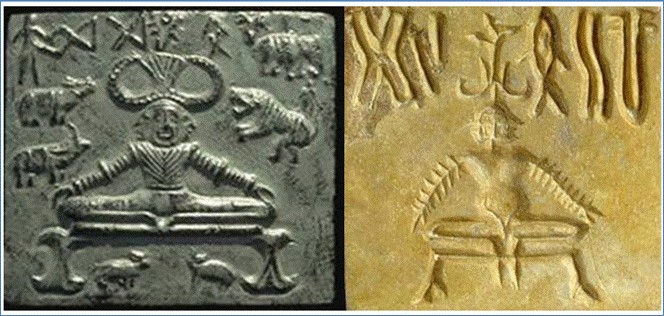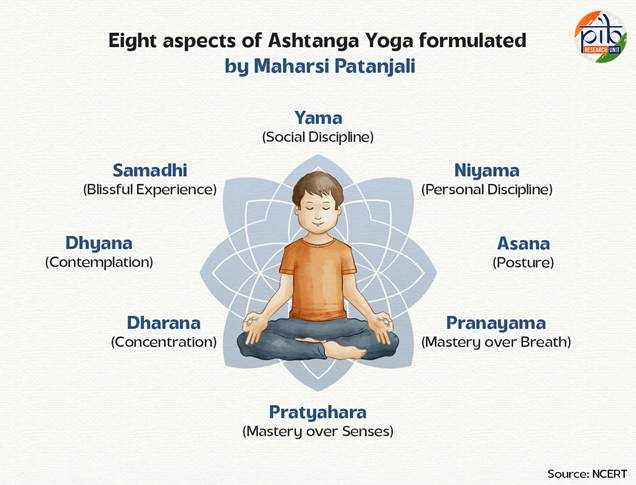Culture & Tourism
Tracing the Timeless Journey of Yoga
Posted On: 17 JUN 2025 3:37PM
As India marks the 11th International Day of Yoga, the 2025 theme “Yoga for One Earth, One Health” conveys a message of unity and well-being. From Ladakh to Kerala, people are coming together in the spirit of Yoga. Today, millions worldwide practise Yoga, thanks to the dedication of eminent Yoga masters who have preserved this tradition through the ages. The practice continues to grow stronger and more vibrant, promoting healthier and more balanced lives.
The history of Yoga is deeply rooted in India’s ancient civilisation, evolving over thousands of years as a unique system of physical, mental, and spiritual discipline. Yoga is believed to have started at the very dawn of civilisation. It began as a spiritual practice in the early Indus–Saraswati Valley culture and gradually evolved into a disciplined path towards self-realisation. This journey reflects India’s enduring wisdom and its continued contribution to the well-being of humanity.
The word Yoga comes from the Sanskrit root yuj, meaning "to unite", symbolising the union of body, mind, and soul. It brings inner balance and harmony with the world, calming the mind and freeing it from distractions.
For many years, scholars believed that Yoga originated around 500 BCE during the rise of Buddhism. However, archaeological findings from the Indus–Saraswati Valley Civilisation suggest that Yoga is much older. Several seals from that era depict human figures seated in meditative poses, suggesting early yogic practices. The worship of idols like the Mother Goddess also points to spiritual practices that were closely linked to yogic traditions.
Yoga’s roots stretch deep into the Vedic period, where it was an integral part of Upasana (spiritual practice) and ritual life. The Sun (Surya) held great spiritual significance, influencing later practices like Surya Namaskara. Pranayama, or breath control. It was already embedded in daily Vedic rituals and offerings. During this period, Yoga was practised under the direct guidance of a Guru, with a strong emphasis on spiritual transformation.

Evidence of Yoga also emerges from the Upanishads, Smritis, Puranas, Buddhist and Jain traditions, Panini’s writings, and the epics of Mahabharata and Ramayana. Theistic streams like Shaivism, Vaishnavism, and Tantricism continued to preserve yogic knowledge and mystical experiences, pointing to the existence of a primordial or pure form of Yoga that permeated South Asia’s spiritual fabric.

A landmark moment in the evolution of Yoga came with Maharshi Patanjali, who lived around the 2nd century BCE. Though Yoga had already been practised since the pre-Vedic period, Patanjali’s Yoga Sutras systematically codified its diverse practices, meanings, and philosophical foundations. His work marked a significant turning point, formalising Yoga into an eightfold path known as Ashtanga Yoga. After Patanjali, many sages and masters further enriched the discipline through documented literature and refined practices.
The period between 700 and 1900 CE marked the classical and pre-modern eras, where systems like Hatha Yoga emerged, emphasising the body as a vehicle for spiritual growth. Texts like the Hathayogapradipika, Gheranda Samhita, and Goraksha Shatakam outlined yogic techniques in detail. Great spiritual leaders such as Ramana Maharshi, Ramakrishna Paramahamsa, Paramahansa Yogananda, and Swami Vivekananda shaped the development and global understanding of Yoga during this period. Swami Vivekananda’s efforts to present Yoga and Vedanta on international platforms helped place Indian spiritual traditions on the world stage.
In modern times, Yoga gained further momentum through the contributions of Swami Sivananda, T. Krishnamacharya, Swami Kuvalayananda, Sri Aurobindo, B.K.S. Iyengar, and Pattabhi Jois, who explored Yoga’s healing, psychological, and spiritual dimensions.
On 27th September 2014, a historic address by the Prime Minister of India, Shri Narendra Modi, at the United Nations General Assembly (UNGA) sparked a global shift in the vision of health and well-being. Emphasising the significance of Yoga for the mind, body, and consciousness, his address brought much-needed global attention to this ancient Indian practice. Just a few months later, the United Nations General Assembly, comprising 193 member states, unanimously declared 21st June as the International Day of Yoga.
Since then, 21st June has been celebrated as International Day of Yoga across the world. The date was chosen for both symbolic and spiritual reasons. The date marks the Summer Solstice, the longest day of the year in the northern hemisphere. On this day, the Earth's tilt is at its highest towards the Sun. Spiritually, it is believed that Lord Shiva, the first yogi or Adi Yogi, began teaching Yoga to the seven sages, or Saptarishis, on this day. This marks the beginning of the yogic tradition.
Yoga is more than just a practice, it is a way of life rooted in India’s values of harmony, compassion, and respect for all. Its focus on overall well-being, both personal and social, makes it relevant for people across the world. No matter one’s religion, race, or nationality, Yoga offers a path to a healthier, more balanced, and meaningful life.
References:
Tracing the Timeless Journey of Yoga
*****
Santosh Kumar/ Sheetal Angral/ Anchal Patiyal
(Features ID: 154674)
Visitor Counter : 1757
Provide suggestions / comments